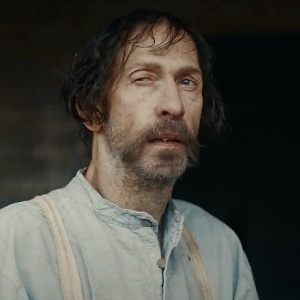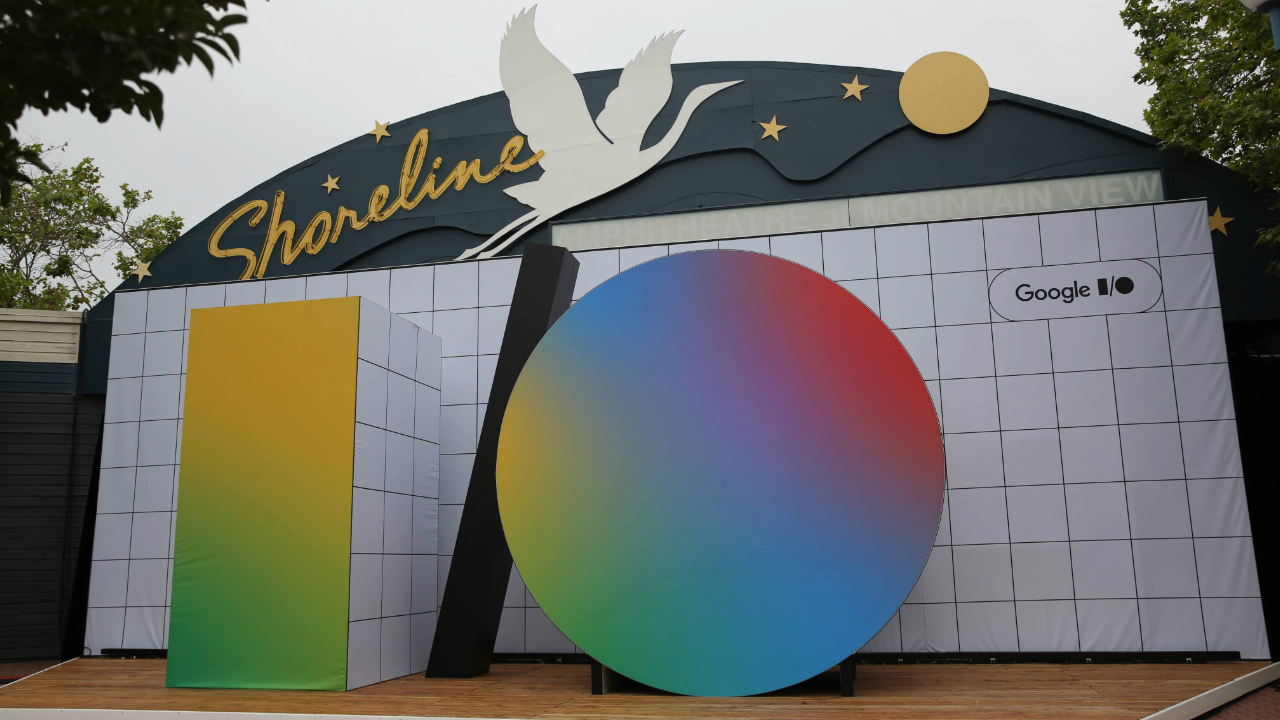Movie Reviews
‘Wham!’ Review: Chris Smith’s Netflix Doc Is an Irresistible Pop Nostalgia Trip, but It’s Also a Serious Portrait of George Michael’s Ambition

Unabashed pop groups with fervid teenage followings tend to get trivialized, at least in the media. They’re dismissed as being slick and calculated and superficial. But there’s a story in “Wham!,” the new Netflix documentary about the quintessential pop duo of the 1980s, that testifies to what a chancy and audacious artist George Michael was even back in his teen-idol days.
The year is 1983. Michael and Andrew Ridgeley, coming off their first album, “Fantastic” (which had a few hits, though none of them were great), have established Wham! as an effective lightweight pop machine, with its two young stars prancing around the stage in sexy sportswear. The time has come to record “Careless Whisper,” a song they’ve had in their back pocket for several years (we hear the super-early demo version of it that they recorded in 1981 in Ridgeley’s living room on a TEAC 4-track Portastudio). Michael has become enough of a powerhouse to hook up with Jerry Wexler, the legendary producer of Aretha Franklin and Ray Charles. He heads down to Muscle Shoals Sound Studio to record the track, with Wexler producing. What more could a 20-year-old budding pop star want?
But we hear the version that Wexler produced, and despite a certain craftsmanly elegance it’s weirdly cut-and-dried. George Michael didn’t like how the song sounded (neither, it turns out, did Wexler). So he decided to redo the track and produce it himself. By the time Michael settled on Steve Gregory to play what became the song’s iconic saxophone solo, he’d already tried out the riff with 10 different sax players. That’s how much he knew what he was searching for. “Careless Whisper,” of course, is a lovely song, but what makes it indelible is the swing, the lilt, the invisible surge beneath the melancholy. That’s what the Wexler version was too staid to give life to, and it’s what George Michael, as a recording artist, breathed into it.
“Wham!,” directed by the ace documentarian Chris Smith (“Fyre,” “Jim and Andy: The Great Beyond”), presents itself as a light and lively scrapbook of an irresistible pop moment (the movie literally uses the 30-volume scrapbook of Wham!’s career compiled by Andrew Ridgeley’s mother as an organizing diary). If all you want from the film is a kind of nostalgic pep pill, a fizzy revel in the bubblegum glory of its subject, you’ll find that the movie totally scratches than itch. But “Wham!” is also a fascinating music documentary that’s telling two stories at once.
The first is the catchy effervescent saga of Wham!, from their initial stumble out of the gate (when they released their first single, “Wham Rap,” in 1981, it didn’t even crack the top 100 in England) to the way that they were rescued, on Nov. 28, 1982, by “Top of the Pops,” the iconic British TV show that invited them to perform at the last minute, because another band had dropped out. We see that appearance: George Michael, bare-chested under a brown leather vest, singing “Young Guns (Go for It!),” which is not a particularly good song. Yet the look! The dancing! The ecstatic exuberance! That was all it took. The single flew up the charts.
Yet the other story the film tells is about the rise of George Michael as a solo artist. And the reason that story is so central to the saga of Wham! is that Michael, we can see in hindsight, was forging that identity from the outset.
He took control of the recordings. He took control of the songwriting (Ridgeley, who had a lot to do with creating the group’s image and spirit, knew Michael excelled in that department and had no problem letting him run with it). And he took control of investing their teenybop aura with something that was, in the infectiousness of its sound, ineffably richer. The truth is that where “Faith,” the defining solo album that Michael released in 1987, was greeted by the world as the launch of George Michael as a “mature” pop star, the songs on “Faith” weren’t appreciably different from the best Wham! songs. The lyrics (notably on “Father Figure”) were a little more serious. But if you listen closely, you can hear that George Michael was already, in the heyday of Wham!, a mature pop star. He just wasn’t packaging himself that way.
The development of the George Michael look and persona is telling, because part of the tale of pop music is that so many great artists also had the karmic DNA to hit the beauty jackpot, and in Michael’s case, during the Wham! years, we literally see him develop from a slightly awkward and blobby teenager into the dreamboat he made himself into. The documentary’s soundtrack is threaded with old interviews with Michael and Ridgeley, who narrate the film. At one point we hear Michael say it surprised him that he could become “the kind of pin-up that Andrew so obviously was.” That sounds like false modesty, but I totally believe him, because it’s borne out by what we see.
The two met in 1975, when they were 11 and 12. Michael, then known by his Greek name, Georgios Panayiotou, joined Ridgeley’s class at the Bushey Meads School in Hertfordshire, where he was a total geek, with glasses and curls and a stare of moon-faced woe. They planned their pop assault from an early age, but by the time they were in their late teens, Michael, now in a leather jacket, still had a slightly raw big-boned adolescent geekiness about him. He wasn’t nearly as handsome as he would be a couple of years later. Whereas Ridgeley was all svelte cuteness.
Then again, from the Beatles with their moptops to Little Richard and his pompadour to Bowie and his glam alien rooster façade, pop stars aren’t just born that way. They need to invent their images, and in George Michael’s case what he did with his hair was paramount. It started off as a dark mop, but there are certain individuals who, when they go blond, transform their souls. Norma Jean Baker had personality and wit and sexy beauty to spare — but could you begin to imagine Marilyn Monroe if she wasn’t blonde? In a funny way, George Michael was the same. When he got those frosted highlights and grew his hair longer, it completed him. He was now a golden god. (He also had the rare face that looked sleeker with a beard.)
Around the same time that he was producing “Careless Whisper,” Michael wrote and produced “Wake Me Up Before You Go-Go,” an epiphany of a song when you consider its guilty-pleasure way of sneaking up on you. In the tribute to George Michael I wrote when he died, I traced my own journey with that song — how in the ’80s, it always struck me as overly chipper and a bit insipid, but when I began to hear it on movie soundtracks I realized that for everything about it you could make fun of, the song had a frisky incandescence that just wouldn’t quit. It kicked. And that was all about the way George Michael produced it.
The great Wham! songs have a kinesthetic quality that connects with you like a hidden spice. We see Michael shaking his booty on stage, in his CHOOSE LIFE shirt, to “Wake Me Up…,” and it’s a different George Michael, now fully liberated. When does unabashed pop become something more than “superficial”? When it’s this bubbling over with its own bliss. The spirit of Wham! was something obvious yet ineffable. You hear it in “I’m Your Man,” a song that in other hands could have been simply catchy and disposable. But when you listen to Wham! do it, something about it — the propulsion, the bounce, those plonking chords, the soar of Michael’s singing — creates a powerful chemical reaction.
The film captures how much Michael was tormented by the drive to hide his sexuality. Wham! was already launched when he came out to Andrew Ridgeley, and as the group got bigger, the disconnect between Michael’s public image and his private reality became, for him, a chasm of emotional instability. He flirted with outing a certain dimension of himself in the lyrics to “Freedom.” Yet it remained a form of code.
And that was connected to his primal ambivalence about fame. Being famous overwhelmed him, yet he’s candid about the consuming need his “ego” had for him to be nothing less than a number-one pop star. This becomes most dramatic during the recording, in 1984, of “Do They Know It’s Christmas?” The whole point of the song was to be a big hit and raise money for the famine in Ethiopia, yet Michael admits that all he could think about was his obsession with the prospect of “Last Christmas” (which was about to be released) becoming Wham!’s fourth number-one single of the year — and how that grand plan would likely be wrecked by “Do They Know It’s Christmas?” (It was. “Last Christmas” had to ride it out at #2.)
There’s no rancor to speak of in “Wham!” The Andrew Ridgeley we see is fully supportive of George Michael going off on his own. Maybe that’s because Ridgeley, though he went through a party-boy phase that was splashed all over the tabloids (who dubbed him “Randy Andy”), was intelligent and non-egomaniacal enough to realize that Wham!, as a group, was 90 percent George Michael and 10 percent him. No pop star in history was ever meant to go off on his own more than George Michael. In that sense, there was nothing tragic or even sad about the breakup of Wham! The tragedy was that Michael fell apart after releasing “Listen Without Prejudice Vol. I.” He created his greatest song, “Freedom! ’90,” then faded into a conflicted haze of ego and self-doubt. But that’s another story. The one that “Wham!” tells coasts along on a nearly undiluted current of joy.

Movie Reviews
‘Blue Sun Palace’ Review: An Intimate, Affecting and Dogma-Free Portrait of Chinese Immigrants in Working-Class New York

It’s become something of a movie fashion to forestall the title credits until well after an establishing sequence, if not deeper into the film. But when the title appears onscreen in Blue Sun Palace, at the half-hour point, there’s nothing self-consciously stylish about it: It marks a dramatic, ground-shifting change in perspective, a gut-punch of a narrative fracture, and one that writer-director Constance Tsang executes with assurance.
At the helm of her first feature, Tsang has made a sharp and tender story about dislocation, centering on a trio of hardworking Chinese immigrants in New York. In the movie’s first 30 minutes, Tsang draws us into the intimate orbit of her expatriate characters: a construction company employee and two colleagues at a massage parlor. Then, the sudden absence of one of them sets everything askew. Absence is the current that drives the narrative: absence from family, from homeland, from purpose. The world these characters inhabit, within an enclave of Flushing, Queens, is a place of in-between, captured in the evocative half-light of Norm Li’s cinematography, suggesting the cool-hot glow of the title’s blue sun. The poignant chords of Sami Jano’s elegantly lean score further fuel the angsty mood.
Blue Sun Palace
The Bottom Line Low-key and gripping.
Venue: Cannes Film Festival (Critics’ Week)
Cast: Wu Ke-Xi, Lee Kang Sheng, Xu Haipeng
Director-screenwriter: Constance Tsang
1 hour 57 minutes
The Blue Sun Palace is a restaurant outside the movie’s main New York setting, making its appearance late in the proceedings. It’s in another, unnamed restaurant that the film kicks off, without ceremony, in a remarkable sequence. The eatery itself is barely seen, Li’s camera moving between Hunan native Didi (Xu Haipeng) and Cheung (Lee Kang Sheng), from Taiwan, holding them close as they dig into spicy chicken and fall into each other’s gaze.
It will be a while before we know their names, or who they are to each other. There’s a sense of established emotional intimacy between them, but at the same time they’re still getting to know each other. Eventually, the likely deduction is that he’s been a client of hers at the massage parlor she runs. When he speaks of his loneliness, his words are muted and restrained, and her eyes well with compassion, the play of feeling on Xu’s face breathtaking. This is not your standard first date. But it is a turning point, the infatuation deepening during an entranced karaoke duet. Didi and Cheung’s morning-after pillow talk is a beautifully played depiction of awakening and connection, mischievous and light even as it delves into the weightier territory of hopes and dreams, a conversational turn sparked by a calendar photo on Didi’s wall.
For Didi, some of those dreams involve Amy (Wu Ke-Xi), her closest friend at the massage parlor and the third key character. Amy is a gifted cook, and she and Didi talk of opening a restaurant together. In the meantime, they, along with Josie (Murielle Hsieh) and Fei (Zheng Lisha), spend their days and nights massaging the bodies of their male customers. A sign on the front door warns, “No Sexual Services,” but exceptions are made — sometimes grudgingly. And, as one tense scene demonstrates, not every client is respectful, to put it mildly.
As to the business’ unseen proprietor — it’s unlikely that the four women have ownership stakes — the movie offers no information or hints. There are a couple of other instances where Tsang could have made the narrative details less hazy, although these lingering questions don’t unmoor the story or lessen its impact.
What is clear is the bond among the parlor’s four women, the sisterly humor that gets them through the workaday hours and helps them withstand the overall sense of displacement. In ways both obvious and offhand, they nurture one another. The feast Amy prepares for Lunar New Year evokes fond and tearful memories of home for Josie. In the here and now, Didi’s maternal warmth is the glue holding everything together. But things break apart, and, as one character notes, “It’s funny how quickly the people you love become strangers.”
Picking up the story after a specific cataclysm and an unspecified length of time, Tsang turns her focus to the question of how to go on, and whether devotedness can devolve into clinging to what’s gone. Amy, obsessed with repairing a ceiling leak, worries it like a wound. Cheung, who has only one friend at work (Leo Chen), fields mirthless calls from his wife and daughter in Taiwan that are always about money, nothing else. When he takes Amy to the restaurant from the opening scene, you might call it a dramatic version of an Annie Hall joke, the bit where Alvy’s attempt to duplicate the romantic hilarity of a lobster dinner with Annie falls numbingly flat with another woman. Cheung’s disappointment aside, for Amy the fraught dinner gives way to the simplest and most difficult realization of all: “I just need to change something.”
While Xu’s compelling vibrancy suffuses Blue Sun Palace, her co-stars offer thornier portrayals. Playing in an unpredictable register, Wu (Nina Wu) gives pulsing life to Amy’s wary brittleness and its eventual melting. Lee, the longtime muse of Taiwanese director Tsai Ming-liang, carries Cheung’s yearning and joy, his guilt and sorrow, in a performance that’s all the more gripping for being measured and contained.
As to the resolution of these characters’ story, it remains an open question in the subtly moving final scenes. In massage parlor reception areas and backrooms, working-class restaurants and karaoke bars, Tsang and her strong cast, with superb contributions from production designer Evaline Wu Huang, have captured something evanescent and life-giving, and grounded it in kitchen clatter and workplace chatter, the gritty day-to-day.
Movie Reviews
Movie Review – Old Henry

Read Time:3 Minute, 2 Second
If you’re hankerin’ to watch a western that flew under the radar, look no further than Old Henry, staring Tim Blake Nelson. This is an overall well-made movie. The only thing better than the writing is the acting and that’s because Tim Blake Nelson is one of the best, and most underrated, actors around these parts. 🙂
How long is the movie? Exactly as long as it needed to be and not a minute extra. The runtime is on the short side, at about 92 minutes. The pacing works perfectly, and every moment serves a purpose. That’s a rare feat these days.
——Content continues below——
The World’s Most Indispensable Movie App
The RunPee app tells you the best times to
run & pee during a movie
so you don’t miss the best scenes.


Download the RunPee app.
100% free (donation supported)
Read more about the RunPee app.
If you haven’t already seen the movie then please come back and drop me a comment after you see it. I’d love to know what others think.
Grade: A+
Analysis
[Spoilers ahead. Don’t read this if you haven’t seen the movie.]
What do we learn in the first scene with Henry, his son Wyatt, and the brother-in-law? Henry is a hard worker, and hard on Wyatt, but fare. Wyatt, is about as rebellious as a young man could be at this time and doesn’t like to work hard. The first thing we see Wyatt do is pick up a rock and put it in the cart to haul off. And he makes it seem like it’s the hardest thing he’s ever done, while his father is standing in a ditch chopping away with a pick-axe.
What’s the last thing we see Wyatt do in the movie? Haul a heavy rock up to the top of a hill to place on his father’s tombstone. No one told him to do it, he just saw that it needed doing. This is character development at its best. We have no idea what Wyatt will do with his life, but we have no doubt that he’s going to take the lessons he learned from his father, especially in the last few days, and make the most out of his life.
The Reveal
The reveal was deftly handled because it didn’t seem like there was anything to reveal, even though there were hints of it. If I paused the movie after each scene to analyze it, it may have been obvious from much earlier in the movie what the reveal would be. But the clues were subtle and covered up. Like trying to follow someone’s trail after a hard rain. The fact that the bad guys were following a trail may have just been part of the story, but it also serves the double purpose of telling the viewer that there is a trail being left throughout the movie that only an astute viewer might notice.
Writing
Potsy Ponciroli wrote and directed the movie. Potsy gave this script a great deal of tender loving care. This is an example of a script ready to be turned into a movie. I would love to talk to Potsy about the drafts that led up to this and how long it took for him to cut and trim everything just so. I feel confident that Potsy knew when there was nothing left to cut or polish in this script. It’s as near to perfect as any script can be. That doesn’t mean it’s the best movie ever. It just means it’s the best movie it could be.
Ratings
This movie has a 7.2/10 on IMDb. That’s not bad for an IMDb rating which I’ve noticed usually trends a little lower than ratings elsewhere. But I’m not sure why. At RottenTomatoes this has a 95% from the critics and 92% from the audience. That’s a little more like it.
Don’t miss your favorite movie moments because you have to pee or need a snack. Use the RunPee app (Androidor iPhone) when you go to the movies. We have Peetimes for all wide release films every week, including IF, Fall Guy, Kingdom of the Planet of the Apes and coming soon Furiosa: A Mad Max Saga and many others. We have literally thousands of Peetimes—from classic movies through today’s blockbusters. You can also keep up with movie news and reviews on our blog, or by following us on Twitter @RunPee.
If there’s a new film out there, we’ve got your bladder covered.
Creator and developer of the RunPee app. When something doesn’t work right in the app it’s pretty much his fault. 🙂
Aspiring author. Would like to finish his “Zombie Revelations” trilogy if he could break away for working on RunPee and the cottage he’s building for RunPee Mom.
Movie Reviews
‘It’s Not Me’ Review: Leos Carax’s Cinema Collage Mixes Movies, History and Real Life into a Personal Manifesto

After Jean-Luc Godard, Leos Carax is probably the French filmmaker most associated with the term enfant terrible. In some ways, he’s been even more terrible than Godard ever was, adopting a pseudonym (he was born Alex Dupont) as a teenager and bursting onto the scene at age 24 with Boy Meets Girl — Godard made Breathless when he was 30 — which immediately turned him into a major young auteur to be reckoned with.
He followed that up with the powerful, AIDS-inspired Mauvais Sang, and then made The Lovers on the Bridge, a film infamous for being a French Heaven’s Gate that went way over budget and flopped (it’s still a fantastic movie). After that Carax disappeared for a while, then reemerged to make a few shorts, compose pop songs and shoot a new feature every decade, the last one being the Adam Driver-Marion Cotillard starrer, Annette.
It’s Not Me
The Bottom Line A short and dense film autobiography suited for the auteur’s fans.
Venue: Cannes Film Festival (Cannes Première)
Cast: Denis Lavant, Nastya Golubeva Carax, Anna-Isabel Siefken, Bianca Maddaluno, Kateryna Yuspina, Loreta Juodkaite, Peter Anevskii
Director, screenwriter, editor: Leos Carax
40 minutes
His latest work, the medium-length, autobiographical collage It’s Not Me (C’est pas moi), is both that of an enfant terrible and a true-blooded Godard disciple. It mimics, or pays homage to, the late Franco-Swiss director’s montage films like Histoire(s) du cinéma and The Image Book, using the same colorful on-screen titles that JLG once used to comment on footage both old and new.
That footage was assembled by Carax for an exhibition meant to happen at the Pompidou Center a few years ago, but still yet to take place. (Back in 2006, Godard was asked to do his own show at the same museum, then abandoned it due to “artistic, financial and technical difficulties,” only to replace it several months later with what was best described as a “non-exhibition.“)
In preparation for the show, the organizers ask Carax a simple question: Who are you? The answer, according to It’s Not Me, it that he’s everything from silent movies to Hollywood Golden Age classics to scenes from his own work. He’s also the music of Nina Simone and David Bowie and The Fall, as well as Ravel and Beethoven. He’s Monsieur Merde (Mister Shit), a raving alter-ego played by Denis Lavant, who’s starred in nearly all of his films. And he’s above all a person who defines himself through the cinema, whether it’s the movies he loves or those he’s made throughout his turbulent career.
People unfamiliar with Carax’s oeuvre will likely be lost here, while fans and cinephiles will find a hearty meal to feast on. It’s Not Me is chock-full of references and influences, from F.W. Murnau to Jean Vigo to Godard himself, whose trembling voice is heard on a voice message he once left the director.
There are also scenes featuring Carax’s real family, including his daughter, the actress Nastya Golubeva Carax, whom we see skipping along the Seine in old cell phone footage, then marvelously playing piano in a scene illuminated by candles. The auteur himself appears a few times as well: at the very start, where he’s lying on something like his deathbed, and later walking through the Buttes-Chaumont park accompanied by Monsieur Merde, who gleefully runs down a hill and defecates in a bush.
The film jumps around so quickly that it’s sometimes hard to follow the director’s lead. At other moments Carax more succinctly expresses his views, such as in a rapid-fire montage of world leaders that groups together Putin, Trump, Kim Jong-il and Benjamin Netanyahu. Another scene provides a brief history of Roman Polanski’s tumultuous and controversial life, in what seems like a plea for his defense.
While Carax’s movies have never been overtly political or historical, this one makes several references to Hitler and the Nazis. In one sequence, the director cuts in footage of Isadore Greenbaum, the Jewish plumber who tried to interrupt a pro-Nazi rally held at Madison Square Garden in 1939. In a later scene staged by Carax — and shot by cinematographer Caroline Champetier, the DP of Holy Motors — a mother sits beside her children in bed, eerily reading a bedtime story that describes the Final Solution.
Again, it’s a hearty meal, and also a condensed one at only 40 minutes. The auteur seems to be squeezing everything he can into a personal manifesto in which cinema, history and real life become interchangeable, and in which he tries to situate his work within film’s larger trajectory. The most telling evidence of this is a sequence which cuts from Eadweard Muybridge’s pioneering photos of a horse in movement to a tracking shot of Lavant gloriously running and dancing down a Paris street in Mauvais Sang.
At such moments, it’s clear that Carax has not only reserved his own place in cinema’s trajectory, but that his films remain instantly recognizable through their romantic exuberance and visual splendor, their dark humor and existential gloom. These traits may not describe who Carax is or wants to be — if one is to believe that his latest movie is not, in fact, him (c’est pas moi). But they’re what we know and love about a great filmmaker, and still very much an enfant terrible at age 63, who’s always put the whole of himself into his work.
-

 Finance1 week ago
Finance1 week agoSpring Finance Forum 2024: CRE Financiers Eye Signs of Recovery
-

 World1 week ago
World1 week agoIndia Lok Sabha election 2024 Phase 4: Who votes and what’s at stake?
-

 Politics1 week ago
Politics1 week agoTales from the trail: The blue states Trump eyes to turn red in November
-

 World1 week ago
World1 week agoBorrell: Spain, Ireland and others could recognise Palestine on 21 May
-

 Politics1 week ago
Politics1 week agoFox News Politics: No calm after the Stormy
-

 World1 week ago
World1 week agoUkraine’s Zelenskyy fires head of state guard over assassination plot
-

 Politics1 week ago
Politics1 week agoUS Border Patrol agents come under fire in 'use of force' while working southern border
-

 World1 week ago
World1 week agoCatalans vote in crucial regional election for the separatist movement














